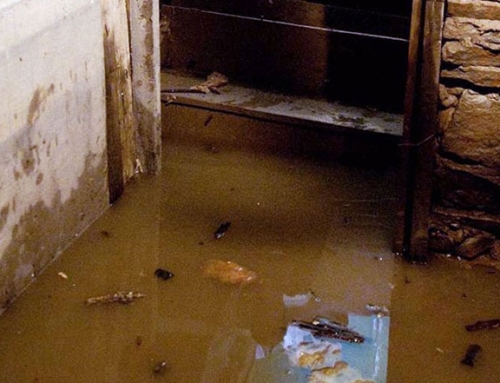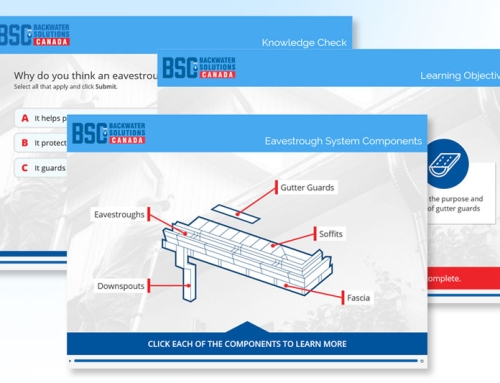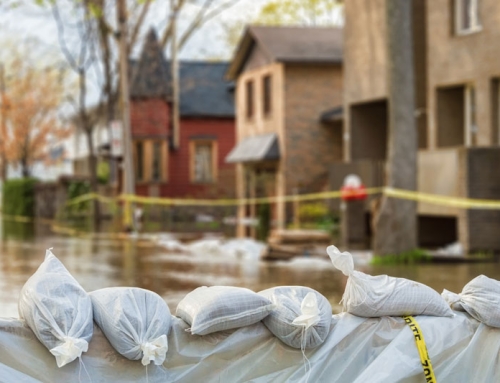While melting snow can cause spring floods, there’s more behind floods than just a heavy snowfall. Eager gardeners who try to dig in their yard in April know the ground can remain frozen long after kids have started drawing chalk flowers on the neighbourhood sidewalk. Add in heavy rainfall in an urban area while the ground is still frozen, and you’ve got overloaded stormwater systems and flooded basements.
Basement floods can mean the heartache of a family discovering all the hours they put into renovating a guest bedroom will literally have to be ripped out and redone. For insurance companies, the need to protect clients from spring floods is urgent, according to the Insurance Bureau of Canada (IBC) “Severe weather events driven by climate change have been happening more frequently and with greater intensity, especially storms involving floods and severe wind,” says Kim Donaldson, the Ontario vice-president of the IBC. “While the insured damage from these storms is significant, the total economic cost to homeowners and governments is even greater. It is important that consumers take precautions and secure their property to minimize potential damage.”
6 reasons spring floods happen
Here are the 6 factors of snow melt flooding that determine the risk of a flood, according to Toronto and Region Conservation Authority
- High soil moisture before snowmelt. For example, a fall of heavy rains can increase the risk of floods in the spring.
- Frozen earth can’t absorb water from snowmelt. If the soil is already saturated with rain or the ground is frozen, water from snowmelt can’t effectively sink into the lawn. Instead this water travels directly to rivers and can cause water levels to rise very quickly.
- Heavy winter snow cover.
- Heavy rains during the melt period. Heavy rain can warm up cold snow packs, causing them to begin melting earlier than they would otherwise. “Rain-on-snow” events are watched carefully for this reason.
- Rapid snow melt. Normal snowmelt rates are comparable to light or moderate rainfall, but high temperatures can cause runoff rates to increase drastically.
- Ice jams in rivers.
Depending on how these factors come together, a region may be at greater risk of Grandmother’s photo albums floating in the basement rec room come spring.
Heavy rain meets frozen ground
At roughly the same time that migrating birds have started to return north, the frozen ground can be a major risk factor for spring floods. In spring, the earth may still be frozen while precipitation falls as rain in the warmer air. Because the soil can’t absorb the water, the rain runs into stormwater systems and can overload the sewer system in urban settings. Unfortunately, overloaded sewer systems can cause basement flooding, as water lines “backflow” into the lowest point in a house. The exception to this flood conundrum: homeowners have some protection from a “backflow” of sewage or stormwater in their basement if a backwater valve has been properly installed, and is inspected and cleaned on a regular basis.
Installing a backwater valve in a home can be relatively inexpensive. On the flip side, basement flooding can be one of the most expensive costs of spring flooding, both for homeowners and the insurance agents who sell them coverage.
Spring floods cost $208 million
In 2019, spring flooding cost $208 million across Eastern Canada. That’s the calculation for Ontario, Quebec and New Brunswick, according to the Insurance Bureau of Canada, which cited the Catastrophe Indices and Quantification (CatIQ) Inc.
In April and May 2019, the weather conditions included rain, warm temperatures that melted snow quickly, and more rain, leading to the news footage of elderly homeowners being evacuated from their homes in boats. The Insurance Bureau of Canada estimates that 18,600 homes were flooded in Eastern Canada. Overflowing rivers led to road and basement flooding, shifted home foundations, roof leaks and sewer backups.
Is there any way to prevent damage from spring floods in the future?
The insurance industry picks a fight with spring floods
The insurance industry has some ideas of how to fight spring flooding, which includes a National Action Plan on Flooding overseen by the national government. But they could do even more.
Three other ways insurance agents can help clients cope with spring floods:
- Advise home owners on the importance of buying flood riders and coverage for home flooding and sewer backup flooding.
- Propose clients install backwater flow valves to help prevent the risk of water and/or sewage flooding their basement during a spring flood.
- Implore clients not to forget that backwater valves should be inspected regularly and cleaned to ensure they remain in good working condition. Without this maintenance factor their coverage may become void.
Taking these steps will help the next time a spring flood develops at a time of year when homeowners want to declutter their garage, instead of mopping out a flooded basement.












